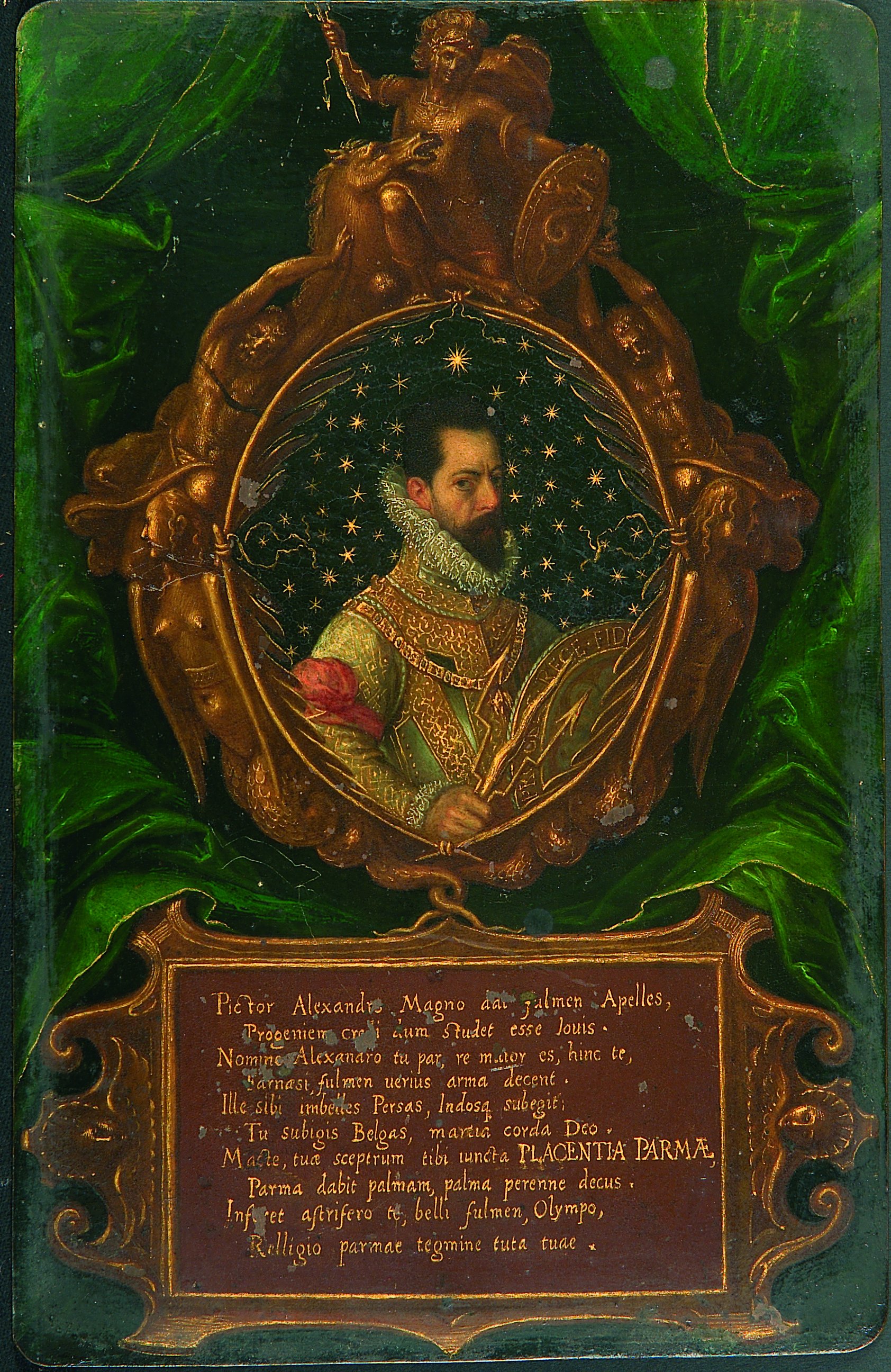ATTRIBUTED TO OTTO VAN VEEN (1556-1629)
PORTRAIT OF DUKE ALESSANDRO FARNESE ( 1545-1592)
£50,000
Auction: 6 December 2002 at 12:00 GMT
Description
Half length in white and gold armour, wearing the insignia of The Order of the Golden Fleece, within a gold cartouche of fabulous figures surmounted by Alexander the Great hurling thunderbolts; beneath an extensive Latin inscription within a stylised frame flanked by winged masks; all against a green curtain.Oil, heightened with gold on copper
20.25cm x 13cm (8in x 5.125in)
Footnote
Note: The painting must date from after 1585 when Alessandro received the Order of the Golden Fleece from Phillip 11 of Spain, his mother's half brother, for his conquering of the City of Antwerp. As a reward Philip returned to Alessandro's father, Duke Ottavio (died 1586) the City of Piacenza and it is to the re-unification of that City with that of Parma to which the Latin text refers ".....Marte, tua sceptum tibi iuncta Placentia Parma......"This inscription differs not only in this particular reference but in some other respects from that which appears in the engraving by Gijsbert Van Veen (1562-1628) after his elder brother Otto's (lost?) original. Though not dated the engraving which is inscribed " Orto et Gisbertus Venij fres finx et f." is probably from considerably after 1586 (when Alessandro succeeded his father as Duke of both Parma and Piacenza) at a time when it was felt superfluous to mention both territorial titles, so pertinent in 1585 when Otto entered Alessandro's service. Whilst Otto van Veen is generally better known both as the master Rubens and the painter of large scale works he would necessarily have adapted his generally broader technique to the scale and the technical requirements of a small copper due to be engraved. Having studied in Italy for five years from 1574 under Federico Zucchero and then having worked in the 1580's at the Court of Rudolf 11 in Prague where there was considerable interest and activity in the field of portrait medals an attribution to Otto van Veen is not unreasonable. Another portrait by Otto van Veen of Alessandro Farnese also bust length is in the Musee des Beaux Arts, Brussels (Inv. no 1327).
We are grateful to Dr R.Ekkart of the Rijksbureau voor Kunsthistorische Documentatie for his opinion, given on the basis of a photograph, that this is very possibly the lost original by Otto van Veen.
Alessandro Farnese (1546-1592), prince and later Duke of Parma was Philip II of Spain's nephew. A cosmopolitan member of Europe's aristocracy as a young man he had visited England and was spoken of as a possible bridegroom to the then Princess Elizabeth. By the early 1570's he was a staff officer in the Spanish Mediterranean fleet before in 1578, although still only 32 he took charge of the Army in Flanders. In January 1581 Parma embarked upon a grand stategy that within four years would double the size of the Spanish Netherlands ending in the capture of Antwerp in 1585. Parma's military reputation as refered to the inscription on the painting is confirmed by a contemporary source Sir Roger Williams. Williams, third-in-command of the British army which awaited the Armada wrote "To speak truth no army that ever I saw, passes that of the Duke of Parma for discipline and good order." In 1585 Parma submitted a 28 page letter to Philip II for the invasion of England and it is arguable that had Philip not decided to wait for the fleet from Spain to unite with the army in the Netherlands prior to an invasion, Parma may have been sucessful. The failure of the Armada in 1588 cleared away many illusions about the power of Spain and encouraged English and Dutch attacks on Iberian possessions overseas. With Spain's ascendancy on the wane, so was Parma's, he died shortly after in 1592.

